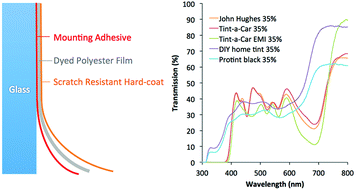Ultraviolet-visible spectroscopic characterisation of automotive window tints for forensic purposes†
Abstract
Automotive window tint samples sourced from Western Australian retailers were analysed using transmission ultraviolet-visible spectroscopy. The spectra showed features characteristic of known window tint film components such as polyethylene terephthalate and cyclic imino esters. Principal component analysis showed that samples cluster by both groups of supplier and individual samples, indicating good reproducibility and sample separation. Window tint samples could be traced back to one of three countries of manufacture, Australia, USA and Israel, suggesting that different suppliers are sourcing their samples from the same manufacturer. This indicates the potential for window tint to be used as forensic evidence, as samples are able to be compared on a questioned versus known basis due to the variation in the sources.


 Please wait while we load your content...
Please wait while we load your content...